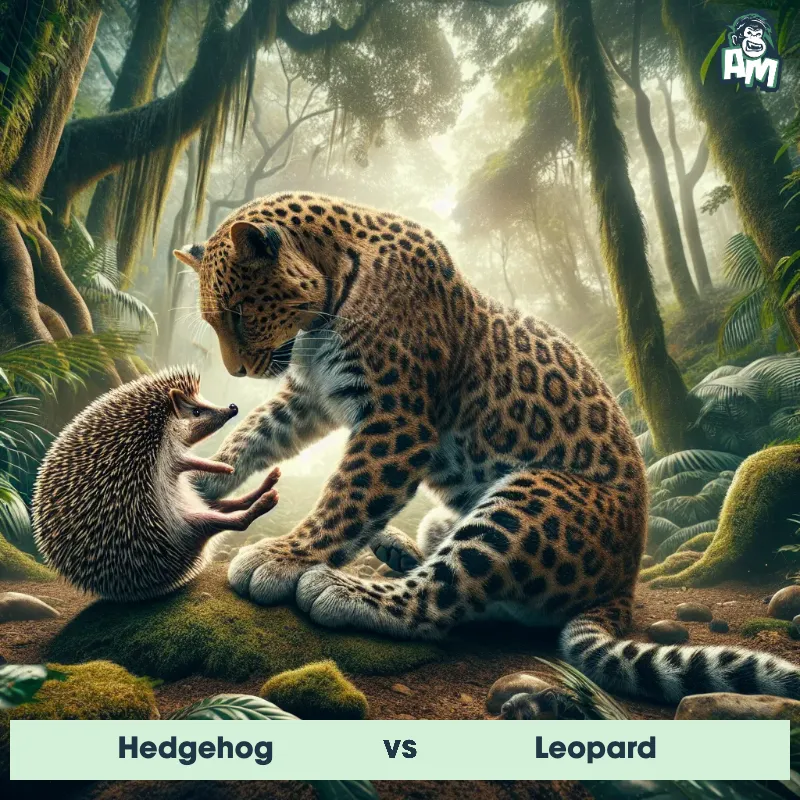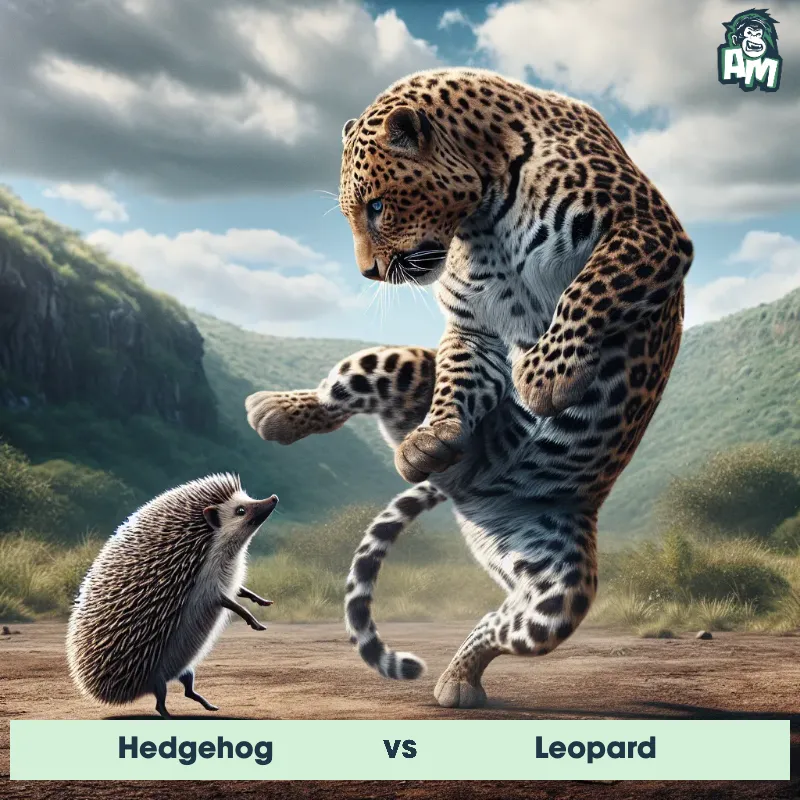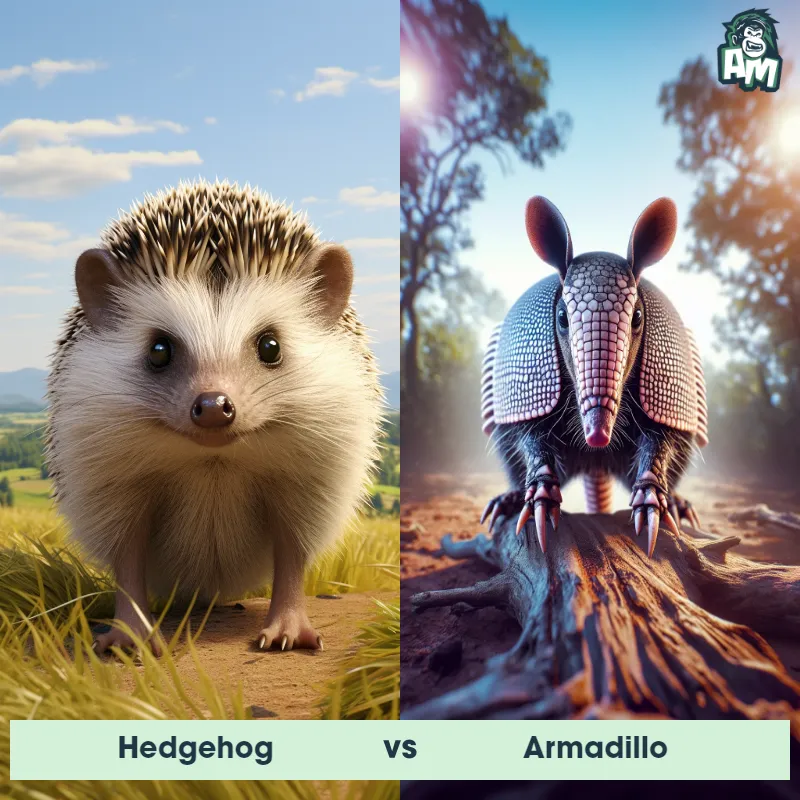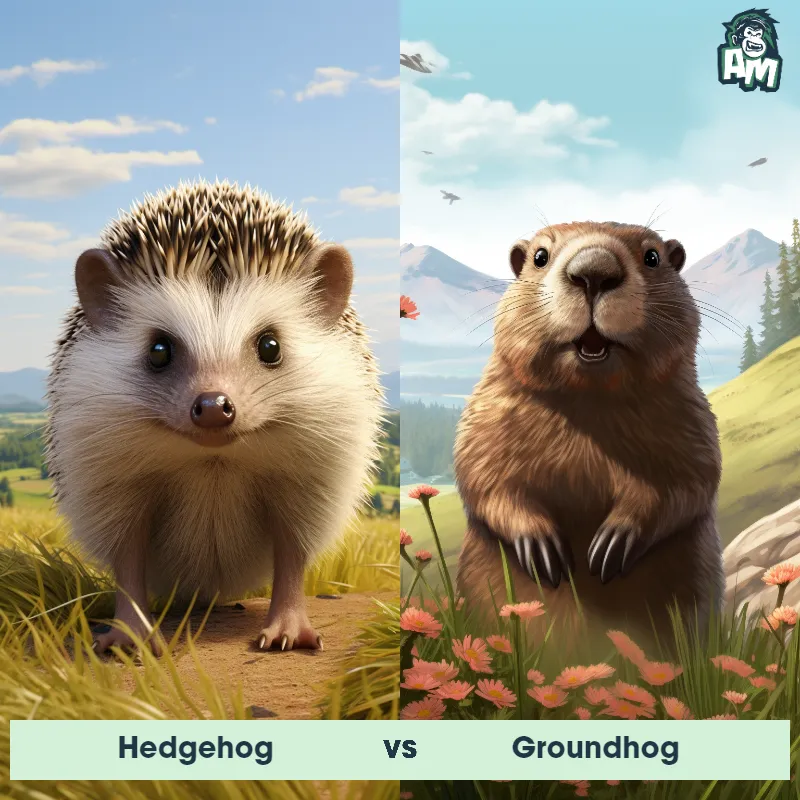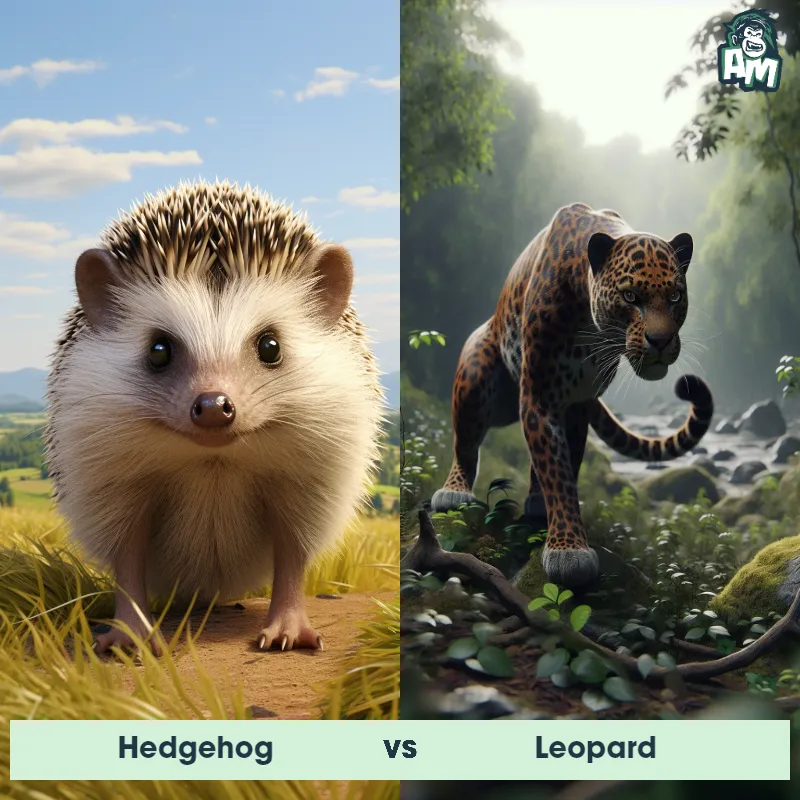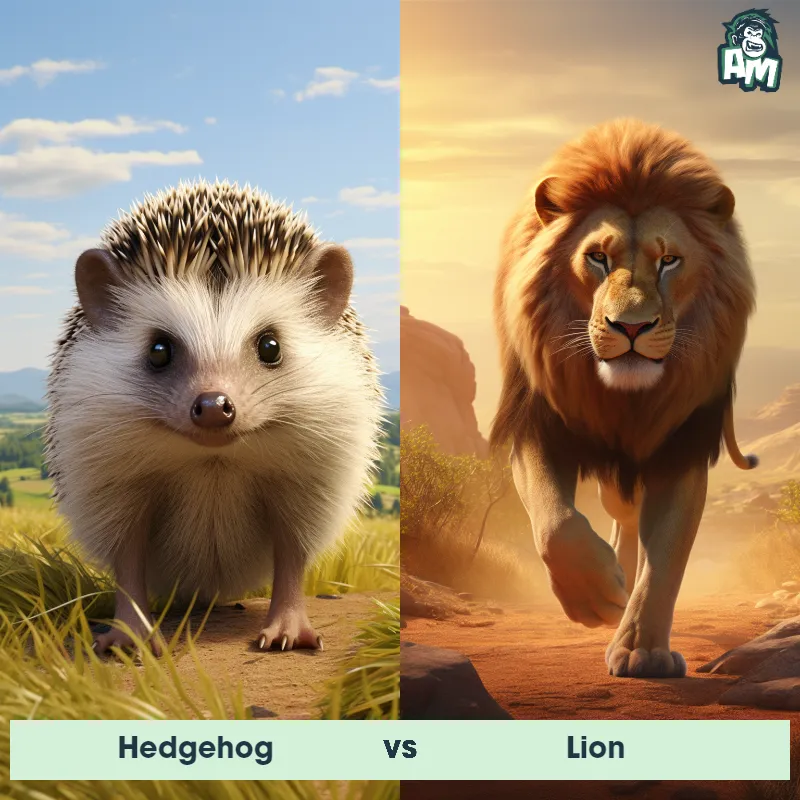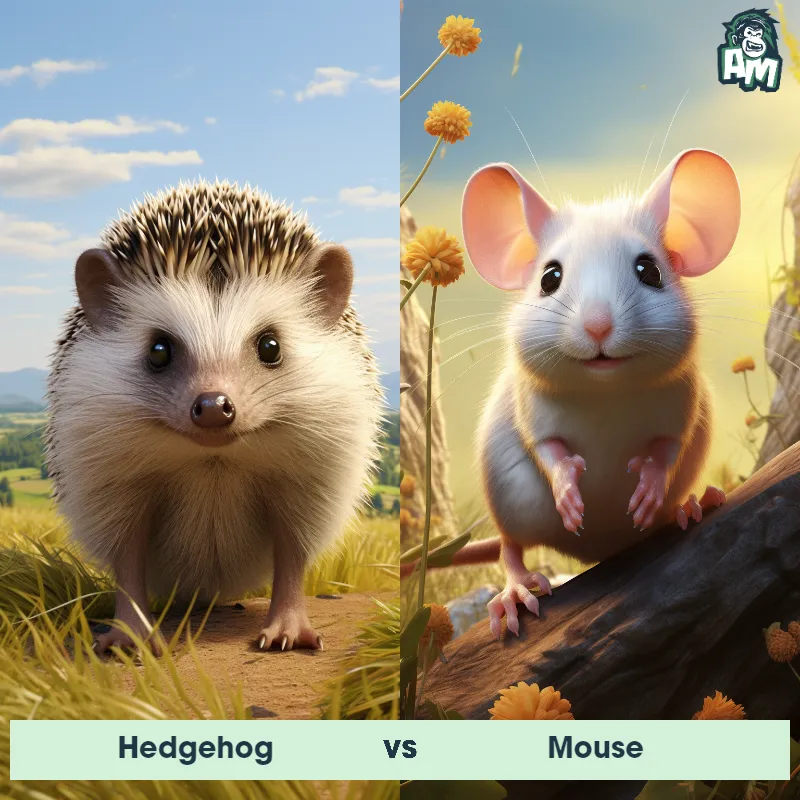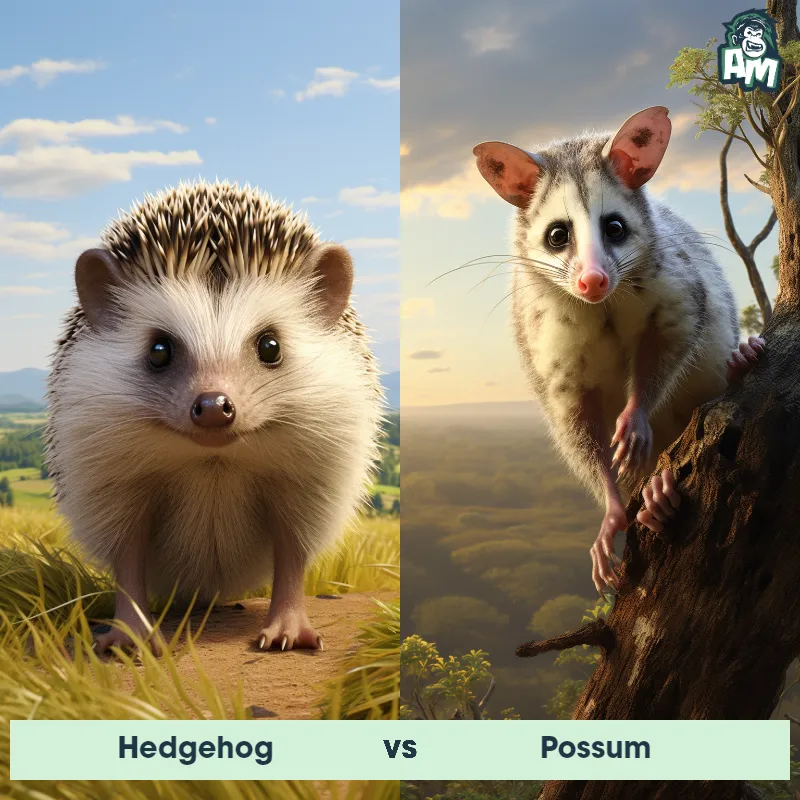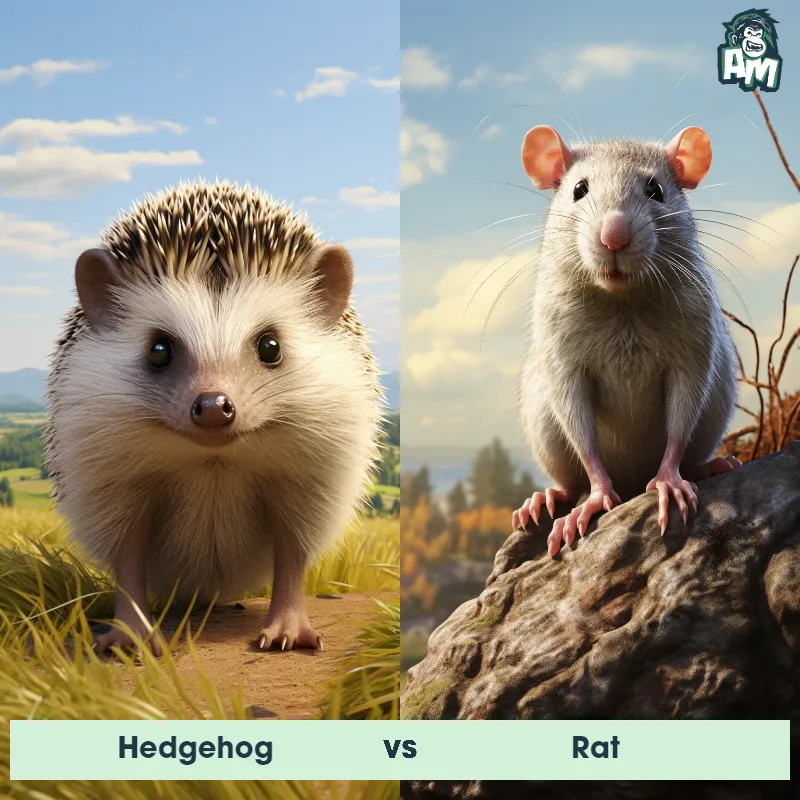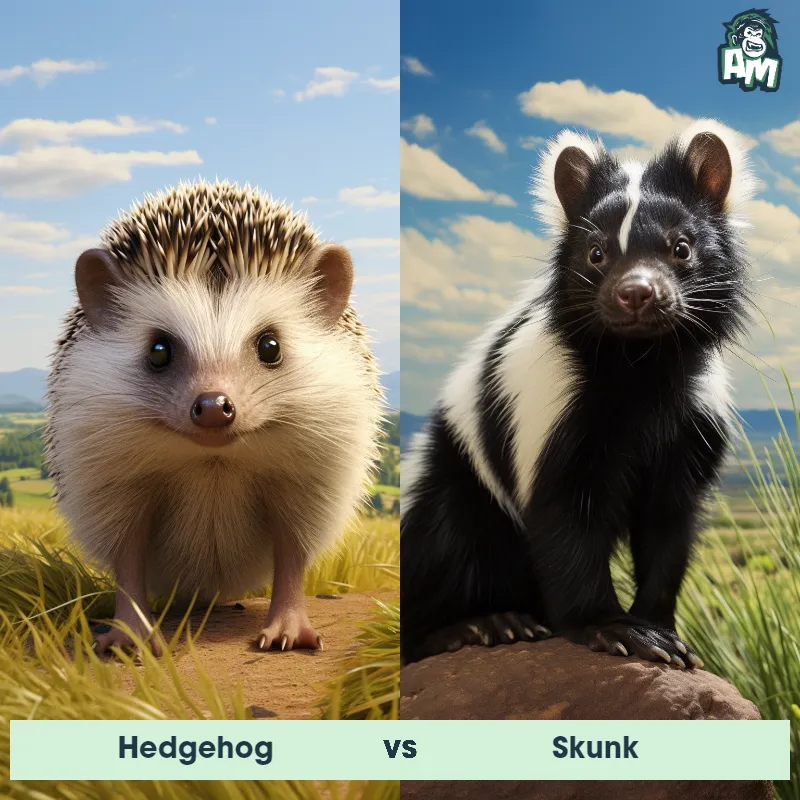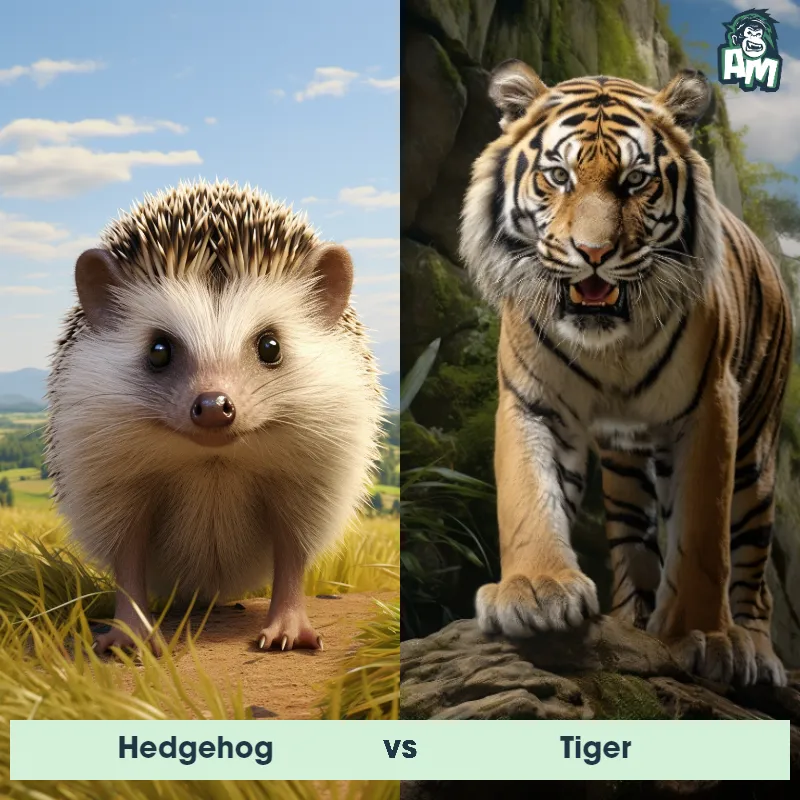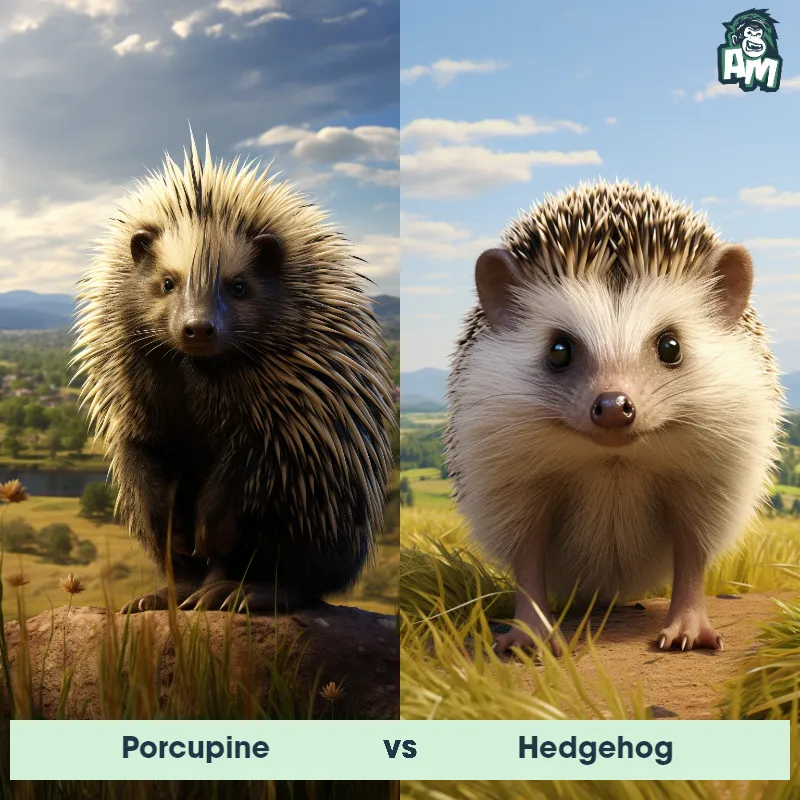The Hedgehog
The hedgehog is a small, spiny mammal known for its unique appearance and nocturnal habits. These intriguing creatures have a round body covered in sharp spines, which serve as protection against predators. Hedgehogs have short legs and a pointed snout, allowing them to easily navigate through dense vegetation and burrows. They have small, black eyes and a keen sense of hearing and smell, making them efficient hunters of insects, worms, and other small invertebrates. Hedgehogs are mainly solitary animals and are found in various habitats, including gardens, woodlands, and grasslands.
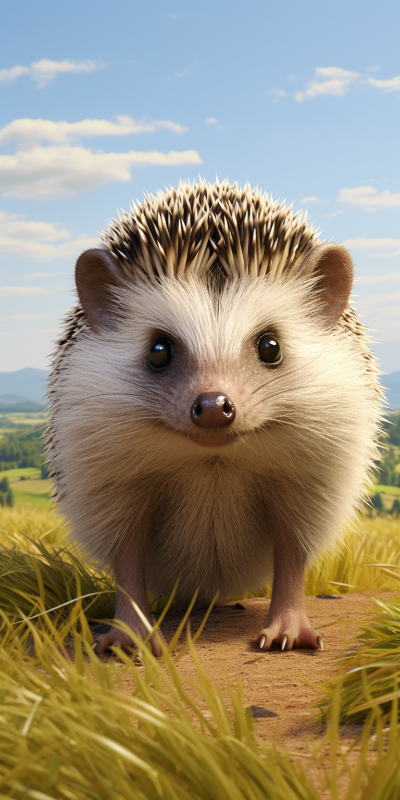
| Hedgehog | |
|---|---|
| Size | 5 to 12 inches (12.7 to 30.48 cm) |
| Weight | 0.5 to 2.2 lbs (0.23 to 1 kg) |
| Speed | 4mph (6km/h) |
| Key Strength | Spiny coat used for defense |
| Biggest Weakness | Soft underbelly |
| Scientific Name | Erinaceinae |
| Family | Erinaceidae |
| Habitat | Forests, meadows, grasslands, and suburban gardens |
| Geography | Europe, Asia, Africa, and New Zealand |
| Diet | Insects, worms, snails, frogs, and small snakes |
| Lifespan | 3 years - 8 years |

The Hedgehog
The hedgehog is a small, spiny mammal known for its unique appearance and nocturnal habits. These intriguing creatures have a round body covered in sharp spines, which serve as protection against predators. Hedgehogs have short legs and a pointed snout, allowing them to easily navigate through dense vegetation and burrows. They have small, black eyes and a keen sense of hearing and smell, making them efficient hunters of insects, worms, and other small invertebrates. Hedgehogs are mainly solitary animals and are found in various habitats, including gardens, woodlands, and grasslands.
Fun Fact: Hedgehogs are skilled swimmers and can cross water bodies by paddling their legs and using their spines as a buoyancy aid.
| Hedgehog | |
|---|---|
| Size | 5 to 12 inches (12.7 to 30.48 cm) |
| Weight | 0.5 to 2.2 lbs (0.23 to 1 kg) |
| Speed | 4mph (6km/h) |
| Key Strength | Spiny coat used for defense |
| Biggest Weakness | Soft underbelly |
| Scientific Name | Erinaceinae |
| Family | Erinaceidae |
| Habitat | Forests, meadows, grasslands, and suburban gardens |
| Geography | Europe, Asia, Africa, and New Zealand |
| Diet | Insects, worms, snails, frogs, and small snakes |
| Lifespan | 3 years - 8 years |
Match Highlights
Hedgehog Matchups
We use AI to simulate matchups between the Hedgehog and other animals. Our simulation considers size, strength, and natural predatory behaviors to determine the most likely outcome.
Hedgehog: Diet, Predators, Aggression, and Defensive Behaviors
What do Hedgehogs eat?
Hedgehogs are omnivores, meaning they eat a variety of foods including insects, worms, snails, frogs, small mammals, fruits, and vegetables. They have a high affinity for insects such as beetles, caterpillars, and crickets. In captivity, they can also consume commercial hedgehog food and cat food as part of their diet.
Do Hedgehogs have any predators?
Yes, Hedgehogs have predators including birds of prey, foxes, owls, and domestic dogs and cats. Young Hedgehogs are especially vulnerable to predation due to their small size and lack of defensive abilities. Hedgehogs have a keen sense of smell and hearing which help them detect predators and escape from danger.
Are Hedgehogs aggressive?
Hedgehogs are generally not aggressive animals and tend to be solitary and shy in nature. However, they may display defensive behavior if they feel threatened or cornered. When feeling threatened, they may curl into a ball, exposing only their spiky exterior to deter predators.
Do Hedgehogs fight?
Hedgehogs are not known to be territorial animals and usually avoid confrontations with one another. However, if two Hedgehogs do come across each other, they may engage in a form of ritualized fighting where they push and prod each other using their spiky quills. This behavior is more common during mating season.
How do Hedgehogs defend themselves?
Hedgehogs have a unique defense mechanism where they curl into a tight ball, covering their vulnerable underside with sharp spines. This makes them unappetizing to most predators and discourages them from attacking. When threatened, they may also emit a loud hissing sound or click their teeth to warn off predators.
What is Hedgehogs' biggest weakness in a fight?
Despite their protective spines, Hedgehogs are vulnerable to attacks from larger predators like badgers or foxes that can easily overpower them. Their small size and relatively slow mobility also make them susceptible to faster predators. In a fight, Hedgehogs rely on their defensive posture and spiky exterior to ward off attackers, but if cornered, they may struggle to escape.
Fun Fact: Hedgehogs are known to get their name from their foraging behavior. As they search for food, they emit grunting noises that resemble the sound of pigs, leading to the term "hedgehog."
Fun Fact: Contrary to popular belief, not all hedgehogs have the ability to roll into a tight ball when threatened. While many species can curl up to protect themselves, some species, such as the long-eared hedgehog, do not possess this defensive behavior and rely on their spines for protection instead.



